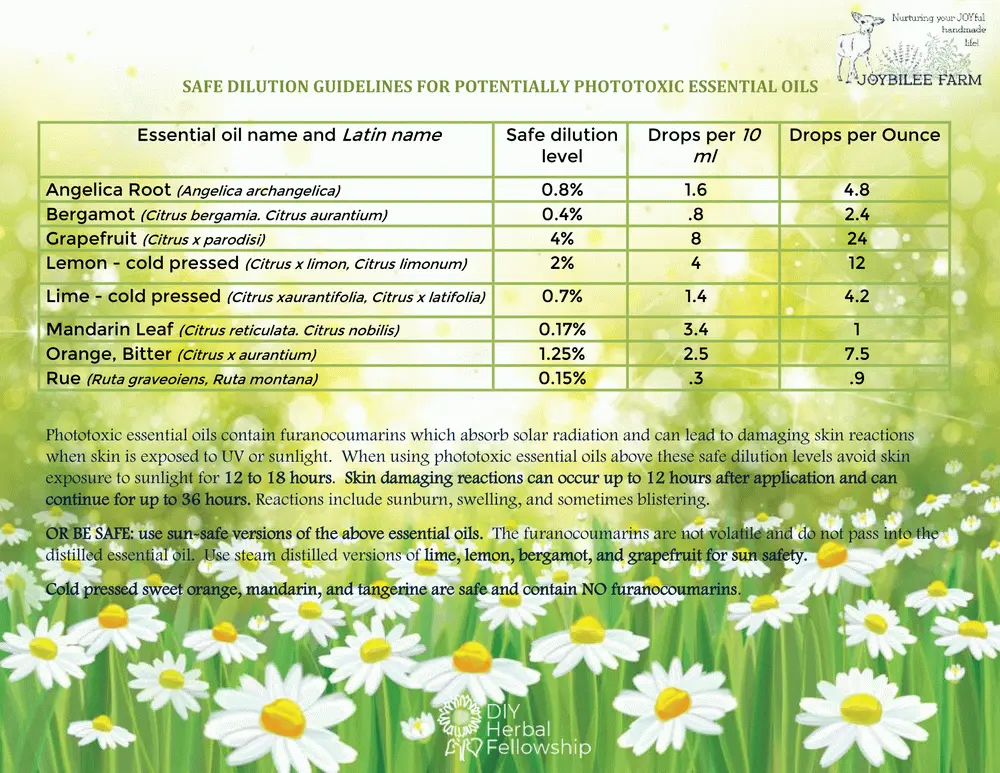When using some essential oils in salve making or moisturizers and lip balms you want to make sure that your product is safe for sun exposure. Some essential oils are photo toxic. If you use them on the skin above safe dilution levels and then the skin is exposed to UV or sunlight, you may have a bad reaction. This reaction can occur up to 12 hours after using these essential oils and continue to increase in intensity for up to 36 hours after exposure. OUCH! I created this chart for you to help you keep your family safe with your salve making and lip balm making.
Phototoxic essential oils contain furanocoumarins which absorb solar radiation and can lead to damaging skin reactions when skin is exposed to UV or sunlight.
Take precautions when using phototoxic essential oils above these safe dilution levels. Avoid skin exposure to sunlight for 12 to 18 hours. Cover up with a heavy shirt. Light tee-shirts may not be enough protection from damaging UV rays.
Skin damaging reactions can occur up to 12 hours after application and can continue for up to 36 hours. Reactions include sunburn, swelling, and sometimes blistering. There can be enough severe skin damage to lead to skin cancer so do take precautions.
OR BE SAFE: use sun-safe versions of the above essential oils. The furanocoumarins are not volatile and do not pass into the distilled essential oil. Use steam distilled versions of lime, lemon, and grapefruit for sun safety. Plant Therapy has a safe bergamot essential oil that is “bergapten free” making it safe for sun exposure, even though it is cold pressed.
Cold pressed sweet orange, mandarin, and tangerine are safe and contain NO furanocoumarins.
Key take aways:
Keep photo-toxic essential oils properly diluted in skin care products, salves, and lip balms.
OR use sun safe, steam distilled version of citrus essential oils that have the potential for phototoxicity. Cold pressed mandarin, sweet orange, and tangerine are not phototoxic. Cold pressed bergapten-free bergamot essential oils is nonphoto-toxic.
Download a printable version of this chart for your personal reference


Leave a Reply
You must be logged in to post a comment.